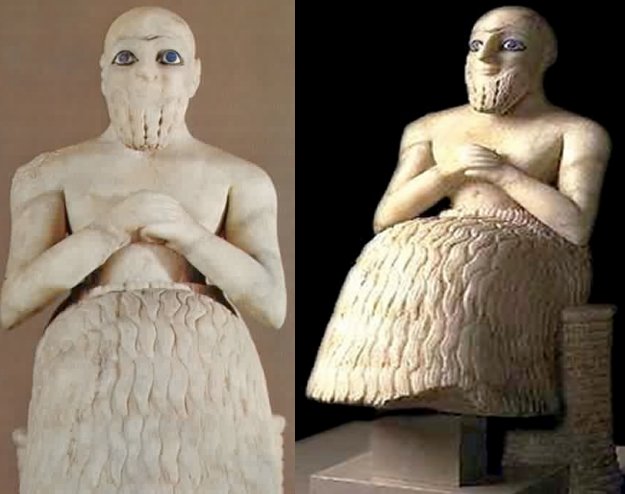Secrets Of Egyptian Blue – World’s Oldest Artificial Pigment And Its Extraordinary Properties
Ellen Lloyd - AncientPages.com - Countless examples demonstrate how ancient civilizations were fascinated with the blue color. Blue was considered to be the color of the gods. Since heavenly deities were believed to reside in the heavens and blue, ancient people viewed blue as a sacred color.
The blue color is clearly visible on hieroglyphic carvings and paintings on the interior walls of ancient Egyptian temples. Credit: Adobe Stock - Kokhanchikov
Sumerians made several ancient statues of beings who had huge and blue eyes. These ancient statues were then placed in the high temple on top of the ziggurat. It seems clear that the eye motif on these figures was very significant to our ancestors. Similar ancient statues with blue eyes have been discovered in other parts of the world, such as Egypt, India, and South America.
Egyptian Blue Has Extraordinary Properties
The four historically most important 'blue pigments are Egyptian blue, lapis lazuli, azurite, and smalt.
However, Egyptian blue is the world's oldest artificial pigment. It appeared about 5,000 years ago in a tomb painting dated to the reign of Ka-sen, the last king of Egypt's First Dynasty.
Scientists have discovered that the Egyptian blue pigment has extraordinary properties and will enable us to reconstruct the past and possibly shape the technological future.
The material giving Egyptian blue its color is calcium copper silicate. It was made by grinding sand, lime, and copper (or copper ore) and heating the mixture in a furnace.
Ancient Sumerian statues with blue eyes. Image credit: Arts History Worlds - Read more
Egyptian blue was widely used in ancient times as a pigment in painting, such as in wall paintings, tombs, mummies' coffins, and a ceramic glaze known as Egyptian faience. Its use spread throughout Egypt, Mesopotamia, Greece, and the far reaches of the Roman Empire. The fact that it was not available naturally meant that its presence indicated a work with considerable prestige.
Once ancient people learned of Egyptian blue many started using it, and today, we can discover it on, for example, early medieval wall paintings in Rome. It was often used as a substitute for lapis lazuli, an extremely expensive and rare mineral sourced in Afghanistan.
Egyptian blue "remained prevalent until the beginning of the Middle Ages, but it not possible to establish an exact date for its disappearance from use. It has been hypnotized that the employment of this pigment became less frequent around the fourth and fifth centuries AD, surviving only in peripheral areas such as central and southern Italy. Until the 1990s, it was generally accepted that the latest paintings where Egyptian blue has been identified are those on the walls of the lower basilica of San Clemente in Rome, which have been dated to around the middle of the ninth century AD." 1
After the fall of the Roman Empire, the oldest blue in history was lost and replaced by lapis lazulli.
"One person who understood the secrets of Egyptian blue was the great Renaissance Genius Raphael who used the artificial pigment to achieve the intense blue of the sky and sea in his famed Triumph of Galatea in Rome's Villa Farnesina. According to a study, Raphael carried out a unique experiment in his workshop and used the color in the masterpiece painted onto the walls of the then luxury Palazzo Chigi." 2
Modern Use Of Egyptian Blue
When irradiated with visible light, scientists have noticed that Egyptian blue emits near-infrared rays with exceptional strength, with even single particles of the pigment detectable from a distance of a few yards.
This suggests Egyptian blue could have a variety of modern applications. For example, it could soon be used in advanced biomedical engineering. Expanding on the ancient Egyptian concept with the pigment's near-infrared-emitting property, scientists can also use it as a nano-ink.
The fact that the secret powder of Pharaohs emits infrared radiation when exposed to a certain kind of light and has unusual properties can help forensics forensic experts solving crimes .
When forensic experts arrive at a crime scene, they dust relevant surfaces with a powder of a contrasting color that sticks to the fingerprints left there. One of the problems is that fingerprints may be hard to pick out on a shiny or highly patterned surface.
Egyptian blue can be used when conventional means are unsuccessful. Scientists have also discovered ancient Egyptian blue can be used to create new nanomaterial that is 100,000 times thinner than a human hair.
So, Egyptian blue is undoubtedly more than just a color.
Though we today credit ancient Egyptians with the invention of the world's oldest artificial pigment, we should not forget ancient civilizations on the other side of the world were just as fond of the blue color as Egyptians.
The Maya Blue (azul maya in Spanish) has been discovered at several architectural locations from the ancient Mayan civilization, including the archaeological site of Cacaxtla on the Mural de la batalla.
This pigment was named Maya blue because it was thought to exist only in the Yucatan Maya area. Today, it is known that there are murals with Maya Blue in various parts of Mesoamerica, as in the Tajin, Tamuín, Cacaxtla, Tenochtitlan (Templo Mayor), Zaachila, Tula, and other parts of Central America. The pigment has also been found on palace walls, ceramics, codices, sculptures, and even the bodies of human sacrifices.
Maya blue first appeared around 800 and was still used in the 16th century.
The recipe and process for preparing Maya Blue, a highly-resistant pigment used for centuries in Mesoamerica, were lost. Credit: Constantino Reyes - Public Domain
The Maya Blue has been a scientific puzzle mainly due to its unusual chemical composition. Maya blue is a highly resistant artificial pigment. Despite the time and the harsh weathering conditions, paintings colored in Maya blue have not faded over time. However, the blue dye could be destroyed with intense acid under reflux. Could the answer to the secret ingredient for Maya Blue be hidden in the composition of the ancient Egyptian blue pigment?
Updated on October 27, 2024
Written by Ellen Lloyd – AncientPages.com
Copyright © AncientPages.com All rights reserved. This material may not be published, broadcast, rewritten or redistributed in whole or part without the express written permission of AncientPages.com
Expand for references- Gaetani, Maria Carolina, Ulderico Santamaria, and Claudio Seccaroni. "The Use of Egyptian Blue and Lapis Lazuli in the Middle Ages: The Wall Paintings of the San Saba Church in Rome." Studies in Conservation49, no. 1 (2004): 13-22.
- Jan Bartek - Fresco Reveals Renaissance Genius Raphael Used Egyptian Blue – World's Oldest Artificial Pigment, AncientPages.com
More From Ancient Pages
-
 On This Day In History: Battle of Tsushima Was Fought – On May 27, 1905
News | May 27, 2016
On This Day In History: Battle of Tsushima Was Fought – On May 27, 1905
News | May 27, 2016 -
 Archaeologists Survey Bronze Age Konar Sandal Site In Southeast Iran
Archaeology | Feb 17, 2021
Archaeologists Survey Bronze Age Konar Sandal Site In Southeast Iran
Archaeology | Feb 17, 2021 -
 Unique Codex Cospi: Pre-Columbian Manuscript Will Soon Reveal Some Of Its Secrets
News | Oct 29, 2020
Unique Codex Cospi: Pre-Columbian Manuscript Will Soon Reveal Some Of Its Secrets
News | Oct 29, 2020 -
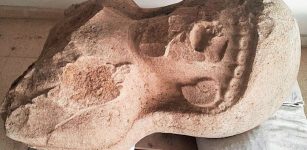 3,000-Year-Old Female Statue Unearthed In Turkey
Archaeology | Aug 11, 2017
3,000-Year-Old Female Statue Unearthed In Turkey
Archaeology | Aug 11, 2017 -
 Why Coyote Wanted People To Die For Their Own Good – A Caddo Nation Legend
Featured Stories | Jun 18, 2021
Why Coyote Wanted People To Die For Their Own Good – A Caddo Nation Legend
Featured Stories | Jun 18, 2021 -
 What Were The Most Important Inca Laws That All Citizens Had To Respect?
Ancient History Facts | Aug 16, 2017
What Were The Most Important Inca Laws That All Citizens Had To Respect?
Ancient History Facts | Aug 16, 2017 -
 Beautiful Ancient Viking Jewelry Made By Skilled Craftsmen
Artifacts | Dec 29, 2015
Beautiful Ancient Viking Jewelry Made By Skilled Craftsmen
Artifacts | Dec 29, 2015 -
 Three Bronze Age Chariots, Shields, Daggers And Decorated Coffins Unearthed In Northern India
Archaeology | Jun 7, 2018
Three Bronze Age Chariots, Shields, Daggers And Decorated Coffins Unearthed In Northern India
Archaeology | Jun 7, 2018 -
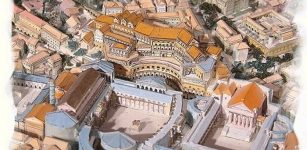 Trajan’s Market Was The World’s First Known Shopping Mall
Ancient History Facts | Jul 2, 2016
Trajan’s Market Was The World’s First Known Shopping Mall
Ancient History Facts | Jul 2, 2016 -
 Ancient Irish Games Hurling And Curling Were Forbidden In 1366 By The Englishmen
Ancient History Facts | Jul 23, 2016
Ancient Irish Games Hurling And Curling Were Forbidden In 1366 By The Englishmen
Ancient History Facts | Jul 23, 2016 -
 Cosmic Message Of The Zapotec Glyphs In The Valley Of Oaxaca – Deciphered!
Archaeology | Mar 10, 2022
Cosmic Message Of The Zapotec Glyphs In The Valley Of Oaxaca – Deciphered!
Archaeology | Mar 10, 2022 -
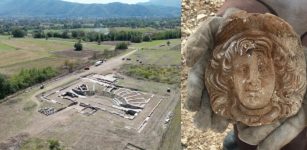 Roman ‘Backwater’ Challenges Major Assumptions About The Ancient Empire’s Decline
Archaeology | Dec 12, 2023
Roman ‘Backwater’ Challenges Major Assumptions About The Ancient Empire’s Decline
Archaeology | Dec 12, 2023 -
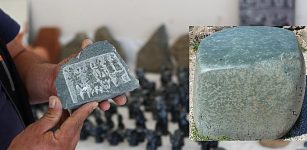 Famous Ancient Hittite Figures And Symbols Engraved In Stone By A Local Artist From Çorum Province, Anatolia
News | Aug 8, 2020
Famous Ancient Hittite Figures And Symbols Engraved In Stone By A Local Artist From Çorum Province, Anatolia
News | Aug 8, 2020 -
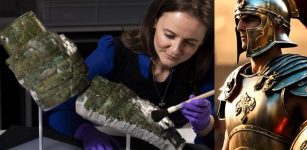 Extremely Unique Ancient Roman Arm Guard Found At Trimontium Fort – Restored And On Display For The First Time Ever
Archaeology | Jan 22, 2024
Extremely Unique Ancient Roman Arm Guard Found At Trimontium Fort – Restored And On Display For The First Time Ever
Archaeology | Jan 22, 2024 -
 Unique 4,000-Year-Old Board Game – Unearthed In Oman
Archaeology | Jan 18, 2022
Unique 4,000-Year-Old Board Game – Unearthed In Oman
Archaeology | Jan 18, 2022 -
 Headless remains related to Huns or Sarmatians puzzle archaeologists in Kazakhstan
News | Aug 30, 2015
Headless remains related to Huns or Sarmatians puzzle archaeologists in Kazakhstan
News | Aug 30, 2015 -
 Discovery Of Unusual Ancient Skeleton Offers Evidence Giants Inhabited California
Archaeology | Mar 31, 2014
Discovery Of Unusual Ancient Skeleton Offers Evidence Giants Inhabited California
Archaeology | Mar 31, 2014 -
 Edfu Texts Reveal Secrets Of Predynastic Egypt And Zep Tepi
Egyptian Mythology | May 27, 2021
Edfu Texts Reveal Secrets Of Predynastic Egypt And Zep Tepi
Egyptian Mythology | May 27, 2021 -
 Engraved Trees Are Living Records Capturing The Rich History And Traditions Of The Sámi People
Archaeology | Nov 21, 2024
Engraved Trees Are Living Records Capturing The Rich History And Traditions Of The Sámi People
Archaeology | Nov 21, 2024 -
 Secrets Of Benjamin Franklin’s Paper Money Deciphered By Scientists
Archaeology | Jul 18, 2023
Secrets Of Benjamin Franklin’s Paper Money Deciphered By Scientists
Archaeology | Jul 18, 2023


